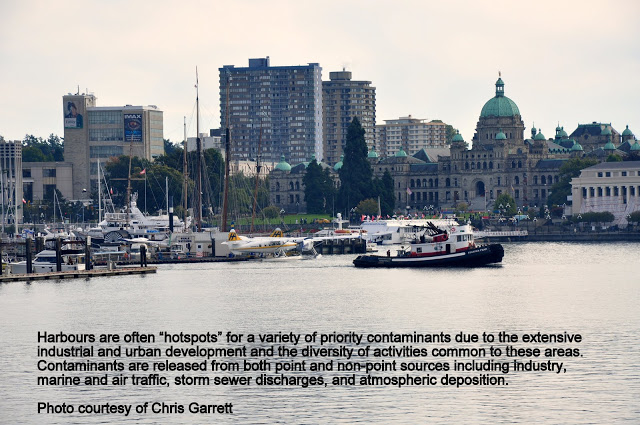The environmentally sound management of chemicals helps to minimize risks to the health of both humans and ecosystems. However, in order to develop effective management plans, it’s important to understand the level of risk posed by each contaminant. There are three criteria which are commonly used to predict the potential risks posed by contaminants in the environment – persistence in the environment, ability to be bioaccumulated by organisms, and toxicity. Contaminants that are P-B-T (persistent, bioaccumulative, and toxic) typically pose the highest long-term risk to the environment.

Examples of P-B-T contaminants include conventional or legacy persistent organic pollutants or POPs (such as polychlorinated biphenyls (PCBs), dioxins and furans (PCDDs/PCDFs), and the pesticide DDT), whose persistence and detrimental effects in the environment have long been recognized. In addition, many of the new or “emerging” POPs are also P-B-T. These include polybrominated diphenyl ethers (PBDEs), alkylphenol and its ethoxylates (AP and APnEOs), and fluorinated organic compounds (FOCs) such as perfluorooctane sulfonate (PFOS) and perfluorinated carboxylic acids (PFCAs). Information on these and other high priority contaminants, their uses and their potential threat to the environment can be obtained by clicking on the links below.
There are a large number of chemical contaminants which may adversely impact the quality of the Georgia Basin environment. In order to help ensure that limited resources are focused on those contaminants posing the highest potential concern, a Toxics Work Group of federal, provincial, and regional government experts in British Columbia developed a priority list of contaminants for the Georgia Basin. While acknowledging that the priorities change as new and emerging issues are identified, this group identified the following list of contaminants as those posing the greatest present threat to the Georgia Basin environment (Garrett 2010).
- legacy or conventional POPs such as PCBs, polynuclear aromatic hydrocarbons (PAHs), PCDDs and PCDFs, and the organochlorine pesticides DDT, hexachlorobenzene (HCB), toxaphene, and hexachlorocyclohexane (HCH) or lindane;
- new or emerging POPs such as AP and APnEOs, halogenated diphenyl ethers (PBDEs), phthalate esters, chlorinated paraffins, and FOCs (including PFOS and PFCAs);
- current-use toxic pesticides (including agricultural pesticides, such as atrazine and endosulfan*; wood treatment chemicals (chlorophenols, creosote, CCA, DDAC, IPBC); and antifouling chemicals based on organotin and copper compounds);
- metals (including cadmium, chromium, copper, manganese, mercury, nickel, silver, and zinc);
- nitrogen-containing nutrients;
- wood extractives;
- bisphenol A, ethylene glycol, pharmaceutical and personal care products, phytoestrogens, and various other natural and synthetic endocrine disruptors.
* Note: The use of endosulfan in Canada has been phased out as a result of the re-evaluation of this pesticide by the Pesticide Management Regulatory Agency. Sales of endosulfan in Canada were terminated on December 31st, 2015 and all uses were discontinued on December 31, 2016 (Health Canada 2011).
Link to References for this Section
More information on priority contaminants:
